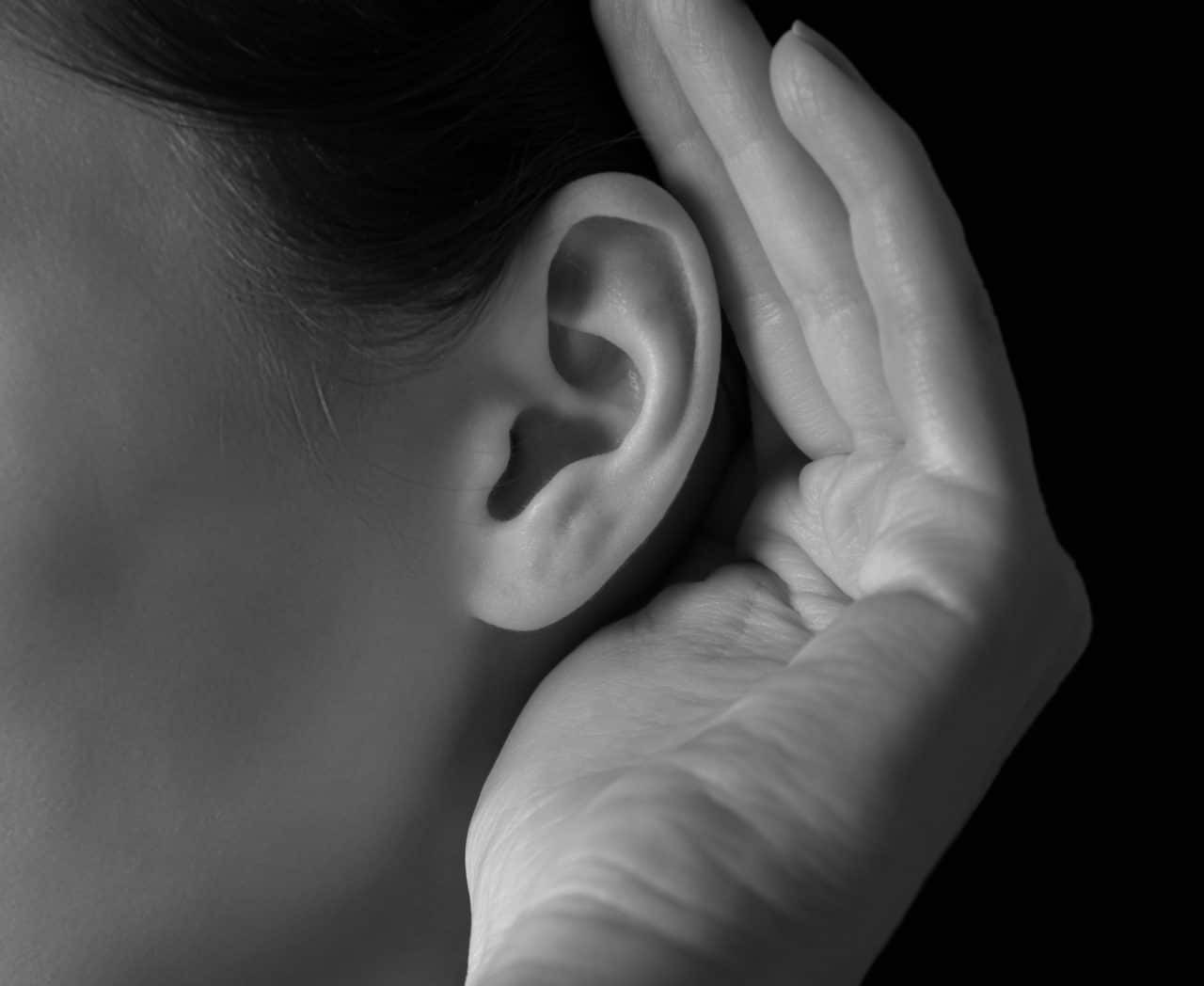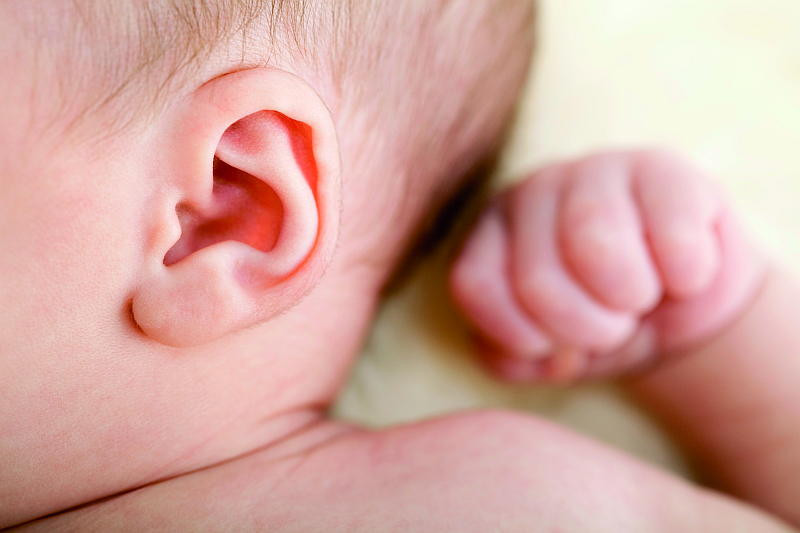Definisi
Pada telinga tengah, yaitu area di belakang gendang telinga, terdapat tiga tulang pendengaran yang dapat bergetar untuk menghantarkan suara dari telinga luar ke telinga dalam. Telinga dalam akan meneruskan gelombang suara ke otak untuk diubah menjadi sinyal suara sehingga kita dapat mendengar.
Otosklerosis adalah kondisi langka yang menyebabkan gangguan pendengaran. Otosklerosis berasal dari kata “oto” yang berarti telinga dan “sklerosis” yang berarti pengerasan abnormal pada jaringan tubuh. Pada otosklerosis, salah satu tulang pendengaran yaitu tulang stapes, mengalami kekakuan dan menyatu dengan tulang di sekitarnya sehingga tidak dapat bergetar. Jika tulang pendengaran tidak bergetar, suara tidak akan dihantarkan ke telinga dalam dan pendengaran menjadi terganggu.
Penyebab
Otosklerosis terjadi karena salah satu tulang di telinga tengah, yaitu tulang stapes, mengalami kekakuan pada bagian kakinya sehingga tulang tidak dapat bergetar untuk menghantarkan suara. Gangguan ini terjadi ketika ada jaringan tidak normal yang tumbuh di sekitar tulang stapes. Kondisi ini juga terjadi karena adanya kelainan proses peremajaan (remodelling) tulang stapes. Remodelling tulang adalah proses yang terus terjadi semasa hidup, yaitu jaringan tulang lama akan diganti oleh jaringan tulang baru.
Penyebab dari gangguan tulang pendengaran tersebut masih belum diketahui dengan pasti. Namun, para ilmuwan memperkirakan adanya keterkaitan dengan riwayat infeksi campak, patah tulang di sekitar telinga dalam, atau gangguan kekebalan tubuh.
Otosklerosis cenderung diturunkan dalam keluarga. Penyakit ini juga diperkirakan berkaitan dengan ketidakseimbangan sitokin, yaitu protein pada sistem kekebalan tubuh. Para peneliti percaya bahwa keseimbangan protein kecil sitokin dalam tubuh diperlukan untuk peremajaan tulang yang sehat. Sehingga, jika terjadi ketidakseimbangan pada protein tersebut, dapat menyebabkan gangguan peremajaan tulang seperti yang terjadi pada otosklerosis.
Faktor Risiko
Otosklerosis terjadi pada lebih dari 3 juta orang di Amerika. Para ahli belum mengetahui dengan pasti penyebab dari otosklerosis. Namun, beberapa faktor berikut terbukti dapat meningkatkan risiko otosklerosis, yaitu:
1. Usia
Penyakit ini biasanya dimulai pada usia muda antara 10 hingga 45 tahun, dengan kasus terbanyak terjadi pada usia 20-an. Gejala paling berat biasanya ditemukan di usia 30-an.
2. Faktor Genetik
Penyakit ini sering diturunkan dalam keluarga. Sekitar 50% orang dengan otosklerosis memiliki gen yang terkait dengan kondisi tersebut. Namun, meskipun Anda memiliki gen terkait otosklerosis, Anda belum tentu pasti akan mengalaminya.
3. Jenis Kelamin
Baik pria maupun wanita dapat mengalami otosklerosis. Namun, wanita memiliki risiko yang lebih tinggi. Belum diketahui mengapa wanita lebih rentan terkena otosklerosis.
4. Kehamilan
Jika wanita yang sedang hamil terkena otosklerosis, ia cenderung lebih cepat mengalami kehilangan pendengaran dibandingkan wanita yang tidak sedang hamil.
5. Ras dan Etnis
Ras Kaukasia memiliki risiko yang lebih besar, yaitu sekitar 10%. Sementara, penyakit ini jarang ditemukan pada orang Afrika-Amerika.
6. Riwayat kesehatan
Masalah medis tertentu dapat meningkatkan risiko otosklerosis. Misalnya, riwayat infeksi, patah tulang di sekitar telinga bagian dalam, serta gangguan kekebalan tubuh di mana sistem kekebalan keliru menyerang tubuh sendiri.
Gejala
Gejala utama otosklerosis adalah gangguan pendengaran yang memberat secara perlahan. Pada awalnya, gejala mungkin berupa ketidakmampuan mendengar suara bernada rendah atau suara orang berbisik. Lalu, gejala cenderung memburuk seiring waktu. Umumnya orang dengan otosklerosis memiliki gangguan pendengaran di kedua telinga, yaitu sekitar 70% kasus. Sekitar 10% hingga 15% lainnya mengalami gangguan pendengaran hanya pada satu telinga.
Gejala lain yang dapat muncul di antaranya:
- Pusing
- Vertigo
- Masalah keseimbangan
- Tinnitus atau bunyi dering atau desis pada telinga, biasanya akan hilang setelah tindakan operasi
Otosklerosis juga sering berkaitan dengan penyakit osteogenesis imperfecta (kelainan bawaan dimana tulang mudah patah) yang memiliki gejala tuli, patah tulang spontan, dan selaput putih mata (sklera) berwarna biru.
Diagnosis
Jika Anda mengalami penurunan pendengaran, konsultasi dengan dokter spesialis THT (telinga, hidung, dan tenggorokan). Dokter akan memeriksa telinga Anda secara langsung, menguji kemampuan dengar Anda, dan menanyakan keluhan serta riwayat kesehatan Anda dan keluarga. Dokter dapat melakukan pemeriksaan audiometri sebagai untuk menilai bila Anda mengalami gangguan pendengaran.
Pada beberapa kasus, dokter akan merekomendasikan CT scan untuk menunjang penegakan diagnosis dengan mengambil gambar bagian dalam telinga dan sekitarnya. Gambar diambil dari beberapa sudut berbeda dan disatukan untuk membuat gambar yang lebih detail.
Tata Laksana
Otosklerosis umumnya dapat memburuk seiring waktu. Dokter akan merekomendasikan Anda terapi atau langkah yang tepat sesuai dengan kondisi Anda saat itu.
1. Pemantauan
Jika otosklerosis ringan, umumnya dokter belum melakukan tindakan khusus, melainkan hanya memantau gejala dan memeriksa pendengaran secara rutin. Dokter juga dapat merekomendasikan Anda untuk menggunakan alat bantu dengar.
2. Perangkat
Alat bantu dengar tidak dapat menyembuhkan otosklerosis, namun dapat memperbaiki gangguan pendengaran yang Anda alami karena otosklerosis.
3. Pembedahan
Jika gangguan pendengaran Anda tergolong berat atau memburuk, dokter akan merekomendasikan operasi yang disebut stapedektomi. Pada prosedur ini, dokter bedah akan memasang alat di telinga tengah untuk menggerakkan tulang stapes yang terjepit dan kaku. Dengan begitu, gelombang suara dapat dihantarkan ke telinga dalam dan Anda dapat mendengar dengan lebih baik.
Stapedektomi dapat membantu beberapa orang. Operasi ini tergolong aman dan telah berhasil mengobati kehilangan pendengaran pada sekitar 94,2% pasien. Namun, seperti operasi pada umumnya, stapedektomi tetap memiliki efek samping. Pada kasus yang jarang terjadi, tindakan ini dapat memperburuk gangguan pendengaran.
Jika Anda memiliki otosklerosis di kedua telinga, dokter bedah akan mengoperasi satu telinga terlebih dahulu dan menunggu setidaknya 6 bulan kemudian untuk mengoperasi telinga lainnya.
Komplikasi
Komplikasi otosklerosis antara lain adalah kehilangan pendengaran. Sementara komplikasi pasca operasi termasuk jarang terjadi. Komplikasi pasca operasi yang pernah ditemukan antara lain:
- Tuli total
- Nekrosis (kematian jaringan) tulang pendengaran inkus
- Muncul lubang pada gendang telinga
- Cedera saraf wajah
- Gangguan pengecapan
- Terlepasnya kaki tulang stapes dari tempat penempelan tulang
- Vertigo atau pusing berputar
Kegagalan operasi biasanya disebabkan oleh kesalahan posisi meletakan alat di telinga dalam atau ukuran alat yang tidak sesuai.
Pencegahan
Belum ditemukan cara pasti untuk mencegah otosklerosis. Sehingga, deteksi dini sangat penting untuk memberikan penanganan yang tepat dan mencegah gangguan pendengaran.
Tidak seperti gangguan pendengaran lainnya, tidak ada faktor risiko yang dapat dicegah pada otosklerosis. Beberapa orang dapat memiliki faktor genetik yang diturunkan dari orang tuanya dan mereka berisiko mengalami otosklerosis. Akibatnya, belum ditemukan cara untuk mencegah berkembangnya otosklerosis.
Berikut beberapa hal yang harus Anda lakukan setelah menjalani operasi otosklerosis agar melindungi telinga dalam Anda dari infeksi, tekanan, dan kebisingan sehingga mengurangi risiko komplikasi.
- Hindari menghembuskan nafas dengan tekanan atau paksaan
- Hindari suhu dingin
- Kurangi risiko infeksi saluran pernapasan atas melalui jaga jarak dengan orang sakit
- Hindari perubahan tekanan udara, seperti pada perjalanan udara atau menyelam
- Hindari suara keras
- Segera konsultasi ke dokter jika mengalami sakit telinga, pusing atau demam, karena menandakan adanya infeksi
Kapan harus ke dokter?
Konsultasi dengan dokter jika Anda memiliki faktor risiko otosklerosis atau mengalami:
- Gangguan pendengaran
- Demam
- Sakit telinga
- Pusing
- Gejala lain setelah operasi untuk menangani otosklerosis
Mau tahu lebih lanjut seputar penyakit-penyakit lainnya? Cek di sini, ya!
- dr Hanifa Rahma
Pagan, CN. (2020). Otosclerosis. Retrieved 8 March 2022, from https://www.webmd.com/cold-and-flu/ear-infection/otosclerosis-facts
Otosclerosis. (2018). Retrieved 8 March 2022, from https://www.nidcd.nih.gov/health/otosclerosis
Shohet, JA. (2021). Retrieved 8 March 2022, from https://emedicine.medscape.com/article/859760-overview
Otosclerosis. (2019). Retrieved 8 March 2022, from https://www.nhs.uk/conditions/otosclerosis/
Shargorodsky, J. (2020). Retrieved 8 March 2022, from https://medlineplus.gov/ency/article/001036.htm#
Batson, L., Rizzolo, D. (2017). Otosclerosis, an update on diagnosis and treatment. Journal of the American Academy of Physician Assistant. February 2017, Vol. 30, p 17-22. doi: 10.1097/01.JAA.0000511784.21936.1b
Otosclerosis. (2021). Retrieved 8 March 2022, from https://my.clevelandclinic.org/health/diseases/22033-otosclerosis#












